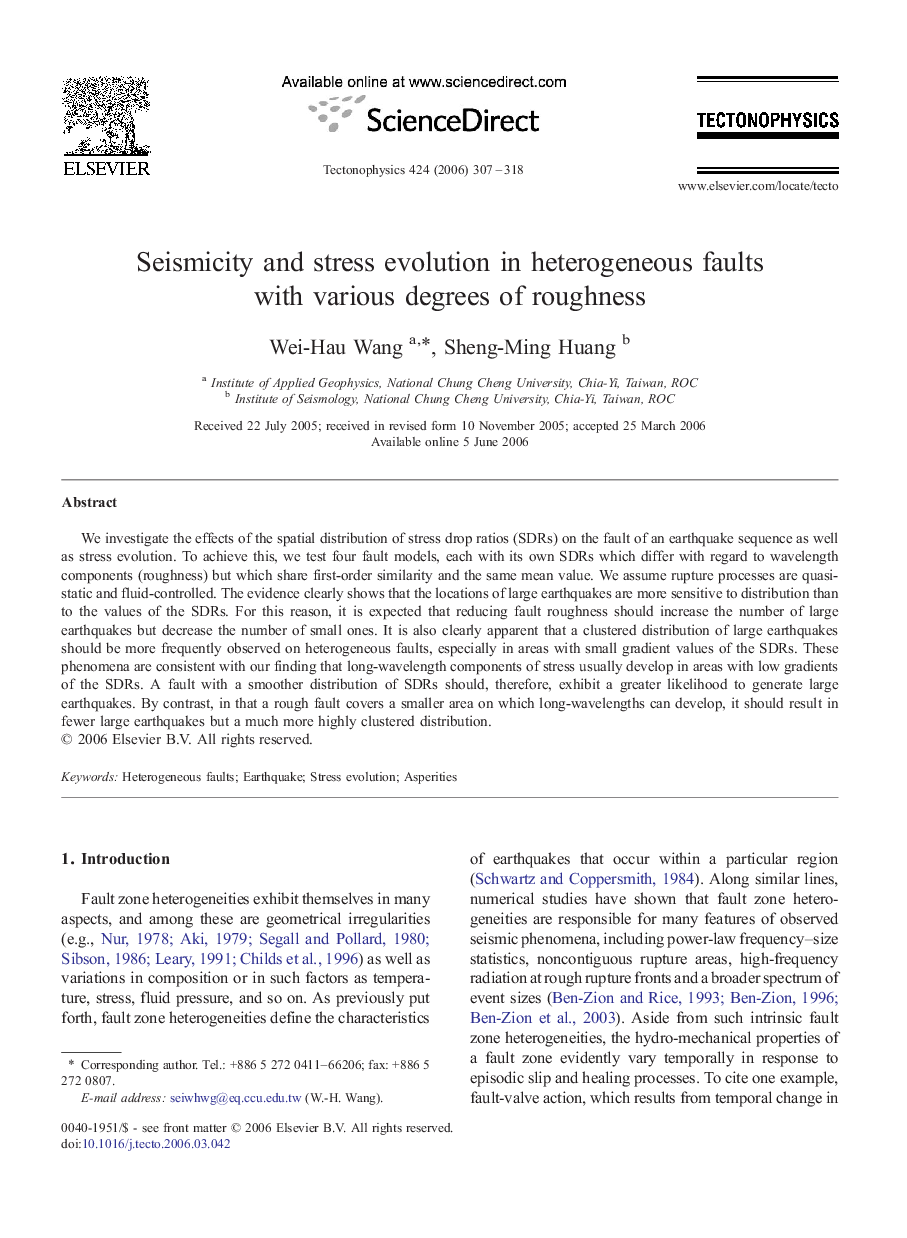| کد مقاله | کد نشریه | سال انتشار | مقاله انگلیسی | نسخه تمام متن |
|---|---|---|---|---|
| 4694935 | 1636947 | 2006 | 12 صفحه PDF | دانلود رایگان |
عنوان انگلیسی مقاله ISI
Seismicity and stress evolution in heterogeneous faults with various degrees of roughness
دانلود مقاله + سفارش ترجمه
دانلود مقاله ISI انگلیسی
رایگان برای ایرانیان
موضوعات مرتبط
مهندسی و علوم پایه
علوم زمین و سیارات
فرآیندهای سطح زمین
پیش نمایش صفحه اول مقاله

چکیده انگلیسی
We investigate the effects of the spatial distribution of stress drop ratios (SDRs) on the fault of an earthquake sequence as well as stress evolution. To achieve this, we test four fault models, each with its own SDRs which differ with regard to wavelength components (roughness) but which share first-order similarity and the same mean value. We assume rupture processes are quasi-static and fluid-controlled. The evidence clearly shows that the locations of large earthquakes are more sensitive to distribution than to the values of the SDRs. For this reason, it is expected that reducing fault roughness should increase the number of large earthquakes but decrease the number of small ones. It is also clearly apparent that a clustered distribution of large earthquakes should be more frequently observed on heterogeneous faults, especially in areas with small gradient values of the SDRs. These phenomena are consistent with our finding that long-wavelength components of stress usually develop in areas with low gradients of the SDRs. A fault with a smoother distribution of SDRs should, therefore, exhibit a greater likelihood to generate large earthquakes. By contrast, in that a rough fault covers a smaller area on which long-wavelengths can develop, it should result in fewer large earthquakes but a much more highly clustered distribution.
ناشر
Database: Elsevier - ScienceDirect (ساینس دایرکت)
Journal: Tectonophysics - Volume 424, Issues 3â4, 2 October 2006, Pages 307-318
Journal: Tectonophysics - Volume 424, Issues 3â4, 2 October 2006, Pages 307-318
نویسندگان
Wei-Hau Wang, Sheng-Ming Huang,